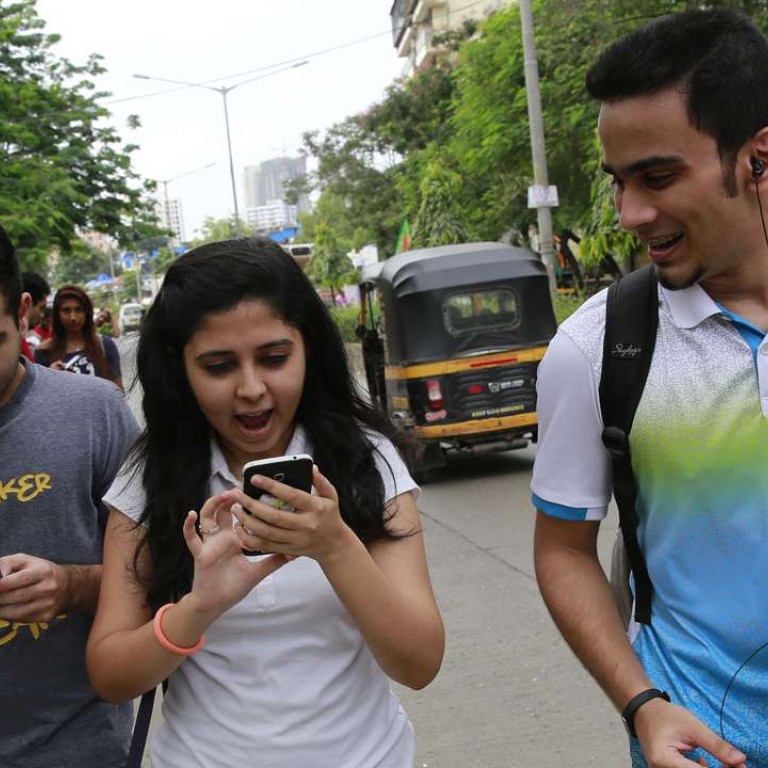
Three ways playing Pokemon Go boosts your health and well-being
Forget the bumps, bruises and accidents - players of the augmented reality smartphone game are walking more, talking with others more and taking steps to give themselves a healthy body
Millions of people around the world, including in Hong Kong, have started playing the latest craze: Pokemon Go, an augmented reality treasure hunt where players must walk to places within the real world and catch, train and battle monsters which appear on their mobile phone screens.
Amid the many reports of engrossed gamers getting bumps, bruises – even making an illegal border crossing – while walking with their faces glued to the screen, there are a number of health and social science experts who have highlighted the game’s potential to boost physical and mental health.

Here are some of the ways it can do this:
1. Pokemon Go makes people move more
Unlike traditional video games that keep users glued to the couch, to succeed in Pokemon Go you have no choice but to hunt around on foot. The result is obvious: increased physical activity.
“This app has revolutionised the way people move, especially adults,” says Catherine Sabiston, associate professor in University of Toronto’s Faculty of Kinesiology and Physical Education in a recent interview on the university’s website.

“Most people don’t associate physical activity with fun, but this game has combined play and challenge with walking, which is the best full body exercise. Players are getting out of their houses, adding a tremendous amount to their step count and building physical activity into their day. If you combine the game with monitoring your step count, you can define your new norm.”
Sabiston’s graduate student Angela Fong adds: “People believe one of the biggest barriers to physical activity is time. But the explosion of this app shows that this isn’t a true barrier. One of the biggest hurdles for getting active is transitioning from light to moderate or vigorous physical activity. Now all of a sudden an app is helping people make that transition.”
The oft-cited recommendation is to walk 10,000 steps a day for adequate physical activity. Data recently released by French activity tracker makers WIthings shows that Pokemon Go has caused millennials to walk more.
The Withings data team compared the average number of steps in the US during the week of July 6 to 12, 2016 – the app was launched in the US on July 6 – and compared this year’s average with last year’s average for the same dates. It was found that people aged 15 to 34 years walked more in this year’s period – the 15-24 age group walked 7,202 steps on average (104 more than last year’s average) and the 25-34 age group walked 7,084 steps on average (75 more than last year’s average).
Of course, there could be many other factors apart from Pokemon Go that could have led the Withings users to walk more. But there’s no doubt to “catch them all” you have to get off your bum.

Matt Hoffman, a clinical assistant professor at the Texas A&M College of Nursing, has been playing Pokemon Go regularly – enough to be affectionately dubbed the “Pokemon Professor” by co-workers - and says the game increases social interaction.

“There is a sense of community when trainers converge in search of Pokemon, or when they gather together at Pokestops,” says Hoffman in an article on the university’s website. “The game is bringing people together, providing opportunity for social interaction and increasing our sense of belonging, which can have a positive impact on our emotional and mental health.”
This aspect of the game could have particular benefit for people who have difficulty with social interaction and communication, such as the autistic. In a blog post on AutismSpeaks.org, the website of the world’s leading autism science and advocacy organisation, school psychologist Dr Peter Faustino writes:
“Pokemon Go is giving young adults with ASD [autism spectrum disorder] their own unique reason to leave the house, albeit if it is to catch pocket monsters,” says Faustino, who is a member of the Autism Speaks Family Services Committee. “GPS-based augmentative reality games can pique the interest of individuals with ASD to the point of giving them ‘excuses’ or better said the inspiration to explore the world around them.
“Now while some might say that their interactions are only around Pokemon characters and that they still have a restricted interest or singular topic of conversation, I would much prefer the scenario in which those circumscribed conversations take place outside the house at the park in their neighbourhood, the library, the supermarket or other community-based location (where they find tokens or poke balls). In fact, what an opportunity for parents to encourage their children to play video games but have to be outside in order to do it!”

3. Pokemon Go could help reduce the burden of some chronic diseases

“If there is something out there which is getting people off the sofa and pounding the streets then this game could be an innovative solution for rising obesity levels,” he says. “Walking is hugely underrated, yet it is man’s best and the cheapest form of exercise. It’s an easy and accessible way to get active and help maintain a healthy body.”
Last year the findings of a study, which was carried out at the Leicester Diabetes Centre, demonstrated the importance of incorporating breaks in prolonged sitting into otherwise sedentary lifestyles.
The study, published in the American Diabetes Association journal Diabetes Care, showed that women could avoid developing Type 2 diabetes by regularly standing up or walking. Breaking up prolonged periods of sitting regularly with five-minute bouts of light movement every 30 minutes significantly reduces blood sugar and insulin levels, the researchers found.

